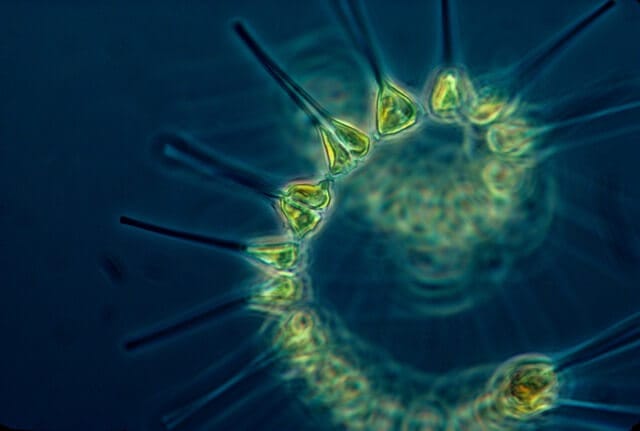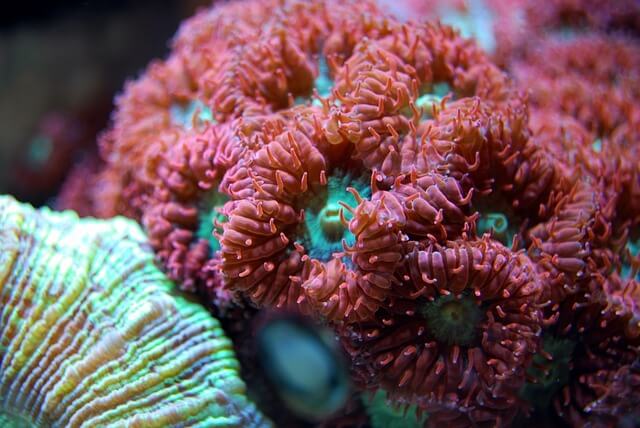Here’s How To Feed Your Reef Naturally with Marine Phytoplankton
Marine phytoplankton are microscopic plants that form the foundation of the aquatic food chain. In reef aquariums, cultivating and using phytoplankton can provide numerous nutritional benefits to your marine inhabitants, promoting a healthier and more vibrant ecosystem. This guide will explore the methods for growing phytoplankton at home, the nutritional benefits they offer, and how to effectively use them to feed your reef inhabitants.
The Importance of Phytoplankton in Reef Tanks
Phytoplankton are a vital component of marine ecosystems. They serve as a primary food source for various small marine organisms, which in turn are consumed by larger creatures. In a reef tank, phytoplankton can enhance the diet of many inhabitants, supporting the health and growth of corals, filter feeders, and other invertebrates.

Nutritional Benefits of Phytoplankton
Phytoplankton are rich in essential nutrients, including:
• Proteins: Important for growth and repair of tissues.
• Fatty Acids: Essential for cellular function and energy.
• Vitamins: Such as B12, which are crucial for metabolic processes.
• Trace Elements: Including iodine and iron, which support overall health.
By incorporating phytoplankton into your reef tank, you provide a natural and balanced diet that promotes the well-being of your marine life.
Methods for Growing Phytoplankton at Home
Cultivating phytoplankton at home can be a cost-effective and rewarding way to enhance your reef tank. Here are the steps and methods to grow phytoplankton:
Required Materials
1. Phytoplankton Starter Culture: Obtain a pure starter culture from a reputable supplier.
2. Culture Vessels: Use clear plastic or glass containers, such as 2-litre bottles.
3. Saltwater: Mix saltwater to the appropriate salinity (typically 1.020 to 1.025 specific gravity).
4. Fertiliser: Specially formulated phytoplankton fertiliser, such as Guillards F/2.
5. Air Pump and Tubing: To provide aeration and prevent settling.
6. Light Source: A fluorescent or LED light with a spectrum suitable for plant growth.
Cultivation Process
1. Prepare the Saltwater: Mix saltwater to the desired salinity and let it age for 24 hours.
2. Set Up the Culture Vessel: Fill the vessel with the prepared saltwater, leaving some space at the top.
3. Inoculate with Starter Culture: Add the phytoplankton starter culture to the vessel. Follow the supplier’s guidelines for the appropriate amount.
4. Add Fertiliser: Add the recommended amount of phytoplankton fertiliser to the vessel.
5. Provide Aeration: Insert an air tube connected to an air pump into the vessel. Ensure the air flow is gentle to keep the culture in suspension.
6. Illuminate: Place the vessel under a light source. Provide 16-18 hours of light per day.
7. Monitor and Harvest: Within a week, the culture should reach a dark green colour, indicating healthy growth. Harvest by pouring off the top 80% of the culture and replenish with fresh saltwater and fertiliser to continue the cycle.
Using Phytoplankton to Feed Your Reef Inhabitants
Once you have a healthy culture of phytoplankton, it’s time to feed your reef tank. Here’s how to do it effectively:

Feeding Frequency
Feed your reef tank with phytoplankton 2-3 times per week. Adjust the frequency based on the needs and responses of your tank inhabitants.
Dosage
The amount of phytoplankton to add depends on your tank size and the density of the culture. A general guideline is to add 1-2 millilitres of dense culture per gallon of tank water. Observe your tank’s response and adjust accordingly.
Target Feeding
For corals and filter feeders, target feeding can be more effective. Use a turkey baster or syringe to deliver phytoplankton directly to the organisms. This method ensures that the food reaches those who need it most.
Broadcast Feeding
Broadcast feeding involves adding phytoplankton directly to the tank water. This method benefits all inhabitants by dispersing food throughout the tank. Ensure your water flow is moderate to distribute the phytoplankton evenly.
Benefits of Feeding Phytoplankton
Enhanced Coral Growth and Colouration
Phytoplankton provide essential nutrients that support the growth and vibrant coloration of corals. Regular feeding can result in healthier and more visually striking corals.

The Ultimate Guide to Vibrant Corals – Part 3 – Feeding Finesse: Nourishing Your Coral Beauties
Improved Health of Filter Feeders
Filter feeders such as sponges, clams, and feather duster worms thrive on phytoplankton. Providing a steady supply ensures they receive the necessary nutrients to grow and reproduce.
Related Articles:
- Marine Sponges: The Filter Feeders of the Deep
- The Delicate Art of Keeping Clams in a Reef Aquarium
- Feather Dusters and Fan Worms in Reef Aquariums: Elegance and Functionality in Your Underwater Paradise
Balanced Ecosystem
Introducing phytoplankton helps to establish a more natural food web within your reef tank. It supports the growth of beneficial microorganisms and small invertebrates, creating a balanced and self-sustaining ecosystem.
Conclusion
Cultivating and using marine phytoplankton in your reef tank offers numerous benefits, from enhanced coral growth and colouration to improved health of filter feeders. By following the steps outlined in this guide, you can successfully grow phytoplankton at home and provide a natural, nutritious food source for your reef inhabitants. Incorporating phytoplankton into your reef tank care routine promotes a healthier and more vibrant ecosystem, ultimately leading to a thriving and visually stunning aquarium.








